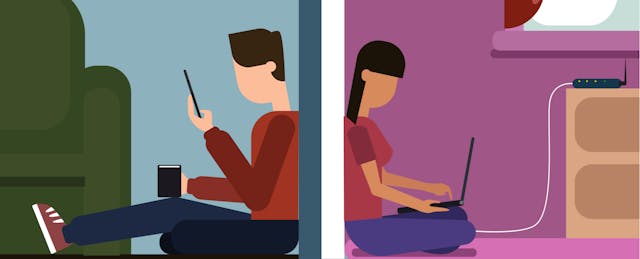Proponents of digital learning, as well as those committed to closing the nation's “homework gap,” rejoiced on Thursday when the U.S. Senate introduced a bill that would invest hundreds of millions of dollars to expand broadband access in communities that currently lack it.
Most Americans who cannot access the internet on a daily basis come from underrepresented and historically marginalized communities, including individuals with disabilities, from low-income backgrounds and those living in rural areas. The same holds for U.S. students without home internet access, many of whom are now expected to use digital learning every day to access class materials and complete homework assignments.
The Digital Equity Act of 2019 would create two new annual grant programs—one formula grant, one competitive—of $125 million each, to be distributed by the National Telecommunications and Information Administration. The grants would seek to help all 50 states, along with Washington, D.C. and Puerto Rico, create and implement digital equity plans, launch digital inclusion projects and support evidence-based research to measure the effectiveness of both.
Sen. Patty Murray (D-Wash.), who is the highest-ranking Democrat on the Senate’s Health, Education, Labor and Pensions (HELP) committee, introduced the legislation alongside a group of nine other Democratic co-sponsors in the Senate. A companion bill in the U.S. House is expected to follow.
Nearly a dozen education organizations have endorsed the bill, including the American Library Association; the Consortium for School Networking; the International Society for Technology in Education; the Schools, Health & Libraries Broadband (SHLB) Coalition and the State Educational Technology Directors Association (SETDA).
On Twitter, many individuals and organizations, including FCC Commissioner Jessica Rosenworcel, who is credited with coining the term “homework gap,” offered full-throated support for the bill and celebrated its introduction with the hashtag #DigitalEquityNow.
No matter who you are or where you live, you need access to modern communications to have a fair shot at 21st century success. The future belongs to the connected--and the Digital Equity Act aims to connect us all. It's good stuff. #DigitalEquityNow https://t.co/US2h9W7nyY
— Jessica Rosenworcel (@JRosenworcel) April 11, 2019
.@SETDA stands with @PattyMurray and calls for #DigitalEquityNow. It’s time to close the digital divide and focus on making sure communities with broadband access have the skills and knowledge to take full advantage of the internet. pic.twitter.com/kHeaPLOf2r
— SETDA (@SETDA) April 11, 2019
Representatives at both SETDA and the SHLB Coalition became involved in the process months ago, offering Murray’s office guidance about how the digital divide affects schools, libraries and students, and providing their support for efforts that promote digital equity.
The meetings around this legislation began as early as September 2018, according to Christine Fox, deputy executive director of SETDA. That’s when SETDA was first looped in.
“There’s been a lot of build-up to it, a lot of organizations collaborating on it,” Fox tells EdSurge. “We believe this [bill] is important because it does go beyond the boxes and wires of broadband implementation, and really gets at building capacity. Most specifically, it can positively impact education for off-campus access and collaboration in communities, and can support both parents and students.”
Fox hopes that, if passed, the bill would provide alternatives—such as libraries and community centers—for kids who are used to going to fast-food restaurants or local coffee shops to get online and finish their homework.
Data varies on exactly how many students are in the position of having to frequent a McDonald’s or Starbucks to get connected, but Murray’s office relied on information from the Pew Research Center, which estimates that 15 percent of school-aged children lack a high-speed internet connection at home. More recent data from the American Consumer Survey found that about 10 percent of students under age 18 lack either internet or computer access at home.
In conversations with Murray’s staff, John Windhausen, executive director of the SHLB Coalition, a nonprofit advocacy organization, emphasized the role schools and other education institutions can play in addressing the digital divide not only among children but among adults as well.
“Our view is that schools are often in the best position to provide digital literacy training for parents and for students,” Windhausen explains, “to help them get educated on what it takes to sign up for broadband, different technology options, how useful it is to be able to complete homework assignments online.”
He adds that although the grants would be available to help individuals across all communities and sectors, “schools and libraries were both top of mind” for the legislative staff involved in drafting the bill.
So far, only Democrats have co-sponsored the bill, but both Fox and Windhausen believe this issue is one that can draw bipartisan support—especially, Windhausen adds, because so many of the rural areas that see low broadband adoption are in states represented by Republicans.


